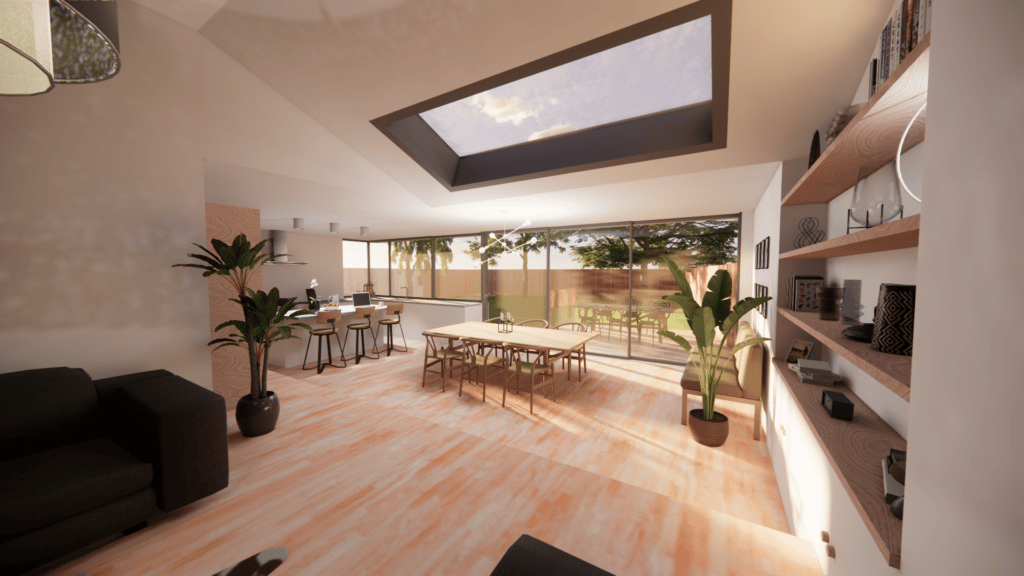11.24.2022 Beyond the (gas) boiler: Alternative ways to heat your home
November 24, 2022
The days of the traditional gas boiler are numbered. They are set to be banned in new builds in just three years’ time and installations are to be phased out completely by 2035. This is a great move from an environmental point of view (and with the current energy crisis raging on, clearly also from a cost perspective). So, if you’re not going to go for gas – or oil, let’s face it – what are your options when it comes to heating your home?

We recently wrote an article about heat pumps. They’re getting a lot of press right now and are absolutely worth looking into. There are, however, plenty of other options out there, when the time comes to replace your current heating system….
Going electric
Electric boilers have often been dismissed as rather clunky, expensive and inefficient. But the tech here has improved significantly over the years and they have definitely earnt their place at the table. Because they heat with electricity and not gas or oil, they produce far lower carbon emissions and if you go for a green energy supplier, so much the better.
What’s more, today’s electric boilers generally have an efficiency rating of between 99 and 100%, compared to 92 to 93% for gas boilers. Admittedly, they are more expensive to run versus gas and oil boilers, but the carbon emissions are much lower. And if you combine your electric boiler with solar panels, they not only have the potential to be a much cleaner, greener way to heat your home, you could actually help offset the slightly higher running costs of the electric boiler too.
Turning towards the sun
There hasn’t been a better time to invest in solar panels. According to the UK Government, the cost of going solar dropped by a massive 88% in the 10 years to 2021, which means that they could save you as much as £534 a year on average. What’s more, the government has halted charging VAT on solar panels for the next five years, with the average cost of installation now standing at around £5,400 for a three-bedroomed house. There is also money to made with solar panels, as you can sell any excess electricity you make back into the grid and earn between 2p and 7p per kW. Alternatively, you can invest in a battery and store your electricity for a rainy day – quite literally.
Solar panels can also be combined with Solar Thermal Panels that will heat your household water using the sun’s rays and store it for you, dramatically reducing your energy consumption here too and slicing yet more of your bills.
If you’re interested in solar panels, this article from The Eco Experts is worth a read.
Infrared – the new kid on the block
Infrared panels are a much newer product on the market and they heat your home in a very different way. Unlike boilers, infrared heating systems heat objects directly, rather than warming the air in the room. Panels on the walls and ceilings of the room channel radiation (infrared radiation is completely harmless – so much so they use it in incubators for babies) to specific areas of the property and when it hits an object, like you or your sofa, it heats that up to then create that feeling of warmth. It sounds a bit space-agey, but it is actually extremely efficient – rather than having to heat all the air in the room in order to then keep you warm, it simply keeps you warm.
An infrared panel system for a three-bedroom house should cost around £6,000, but this can fluctuate as you will need a panel in all the other rooms too. And to fully replace the functionality of your boiler, you will also need to install an air source hot water cylinder.
To find out more about Infrared panels, have a read of this article by The Eco Experts.
Insulate, insulate, insulate
If you’re not looking to replace your entire heating system, there are still other ways you can improve the way you heat your home. We all know that insulation is a winner – especially in our draughty loft spaces. But solid wall insulation is also well worth considering (The Eco Experts have a great article about it here). This can be installed on the internal side of exterior walls or directly to the outside of your home.
For internal solid wall insulation you will lose internal floor space, for example, using a 60mm thick Steico system will add a total of around 80mm to the thickness of your existing walls. We recommend Steico because it is a wood fibre insulation, with good levels of breathability and is produced from renewable raw materials. It is, however, more expensive than other materials out there. Externally, the insulation can be added directly to the outside of your home and then either re-rendered or clad. It is less messy and you do not lose any internal space, but it is more expensive.
And don’t forget your windows, they can make or break the efficiency of your heating system. So, take a look – what condition are they in? Could they be improved? And if they need replacing, could you opt for double or even triple glazing? Anything you can do here, will make a huge difference and help you bring down the costs involved in heating your home.
